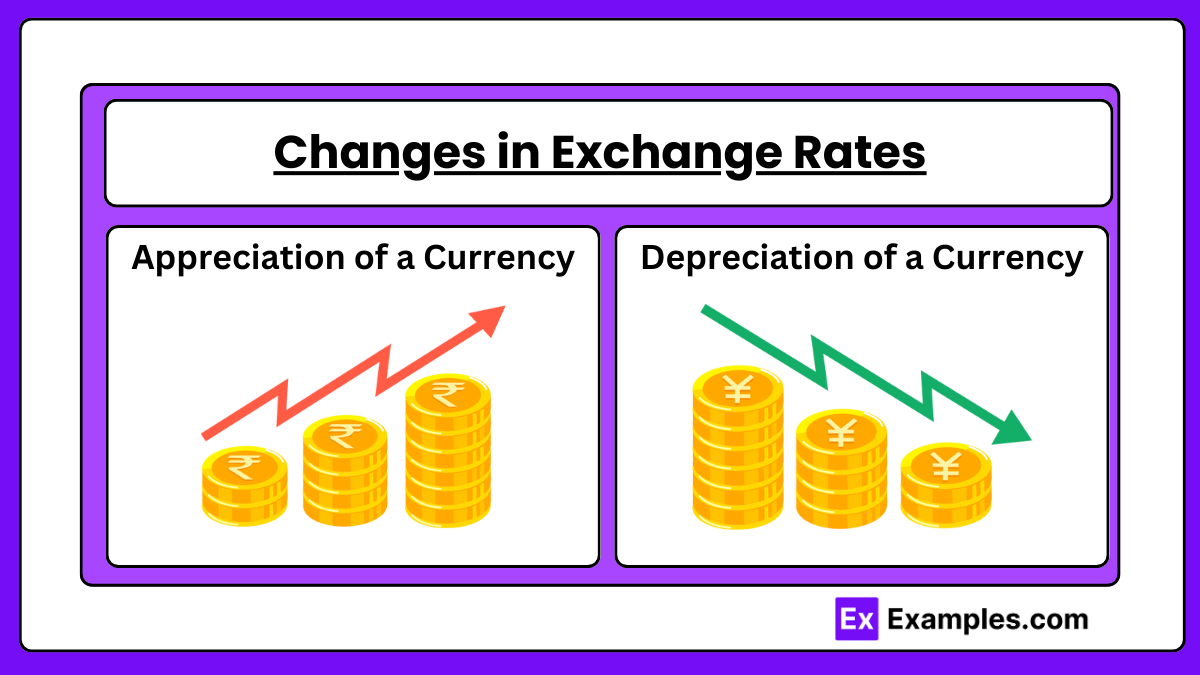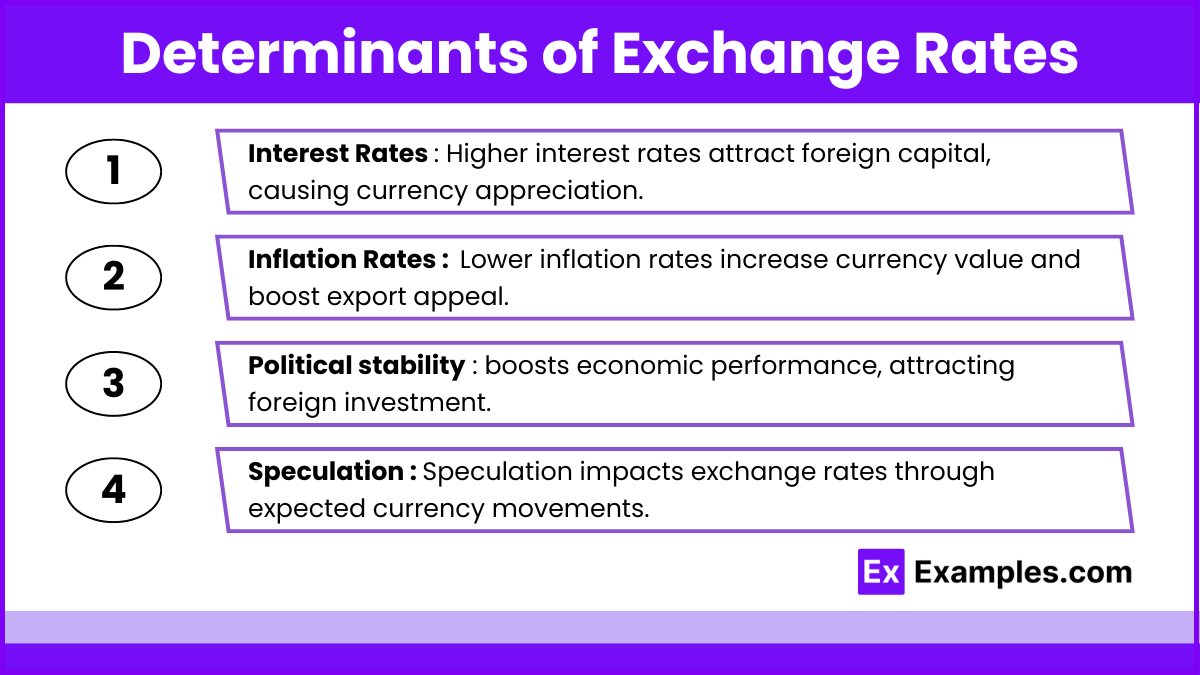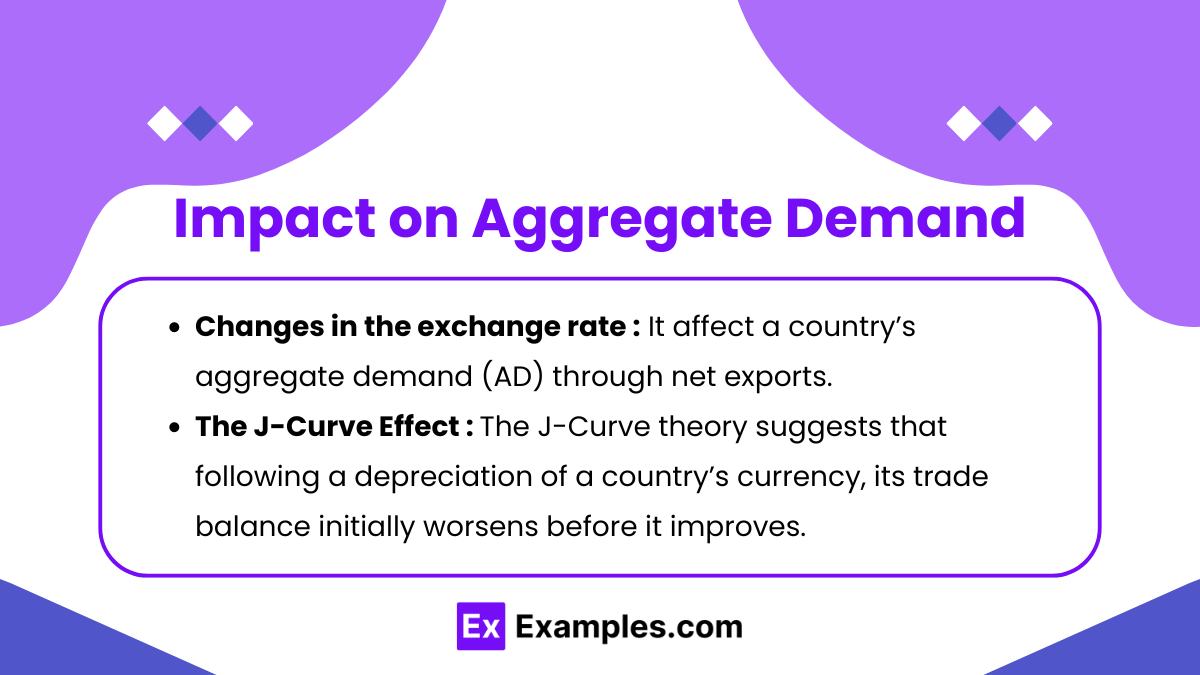In AP Macroeconomics, understanding the changes in the foreign exchange market and their impact on net exports is vital for analyzing global trade dynamics. The foreign exchange market determines currency values, which in turn affect the prices of exports and imports. When a country’s currency appreciates, exports become more expensive, reducing net exports, while a depreciating currency makes exports cheaper, increasing net exports. These fluctuations play a critical role in influencing a nation’s aggregate demand, economic performance, and trade balance on the global stage.
Learning Objectives
When studying “Changes in the Foreign Exchange Market and Net Exports” for AP Macroeconomics, you should focus on understanding how currency appreciation and depreciation affect a country’s trade balance. Learn how changes in exchange rates influence the relative prices of imports and exports and how this impacts net exports. Additionally, grasp the factors driving exchange rate fluctuations, such as interest rates, inflation, and political stability. Recognize the role of government policies in managing exchange rates and how these changes affect aggregate demand and economic performance.
Foreign Exchange Market
The foreign exchange (Forex) market is where currencies are traded. It operates based on supply and demand for different currencies and determines exchange rates between countries. Exchange rates influence a country’s trade by affecting the price of exports and imports.
Changes in Exchange Rates

- Appreciation of a Currency: When a currency appreciates, it becomes stronger relative to other currencies. This makes exports more expensive for foreign buyers and imports cheaper for domestic consumers.
- Impact on Net Exports: Exports decrease because foreign consumers find the country’s goods more expensive, while imports increase as domestic consumers find foreign goods cheaper. This leads to a decline in net exports.
- Depreciation of a Currency: When a currency depreciates, it becomes weaker relative to other currencies. This makes exports cheaper for foreign buyers and imports more expensive for domestic consumers.
- Impact on Net Exports: Exports increase as foreign consumers find the country’s goods cheaper, and imports decrease because domestic consumers find foreign goods more expensive. This leads to an increase in net exports.
Determinants of Exchange Rates

Several factors influence currency appreciation and depreciation:
- Interest Rates: Higher interest rates attract foreign capital, increasing demand for the domestic currency, leading to appreciation. Conversely, lower interest rates lead to depreciation.
- Inflation Rates: Lower inflation rates tend to appreciate a currency because the purchasing power is higher, making exports more attractive.
- Political Stability and Economic Performance: Countries with stable political environments and strong economic performance often have stronger currencies due to increased foreign investment.
- Speculation: Traders may buy or sell currencies based on expectations of future movements, affecting exchange rates.
Impact on Aggregate Demand

Changes in the exchange rate affect a country’s aggregate demand (AD) through net exports. Net exports are a component of AD, along with consumption, investment, and government spending. When net exports rise due to currency depreciation, aggregate demand increases. Conversely, when net exports fall due to currency appreciation, aggregate demand decreases.
The J-Curve Effect:
The J-Curve theory suggests that following a depreciation of a country’s currency, its trade balance initially worsens before it improves. This is because the demand for exports and imports can be inelastic in the short run, leading to more expensive imports without a corresponding immediate increase in exports. Over time, as demand adjusts, the trade balance improves.Government Policies and Foreign Exchange:
Governments can influence exchange rates through monetary policy
- Expansionary Monetary Policy: When a central bank lowers interest rates, it can lead to currency depreciation. This can stimulate net exports by making domestic goods cheaper for foreign consumers.
- Contractionary Monetary Policy: Raising interest rates can lead to currency appreciation, reducing net exports as domestic goods become more expensive abroad.
Examples
Example 1. US Dollar Appreciation
When the U.S. Federal Reserve raises interest rates, the U.S. dollar typically appreciates. As the dollar strengthens, foreign goods become cheaper for U.S. consumers, leading to an increase in imports. Simultaneously, U.S. goods become more expensive for foreign consumers, reducing exports. As a result, the U.S. experiences a decline in net exports, which may lower aggregate demand in the economy.
Example 2. Japanese Yen Depreciation
Japan’s central bank adopts an expansionary monetary policy, lowering interest rates. This causes the Japanese yen to depreciate relative to other currencies. As a result, Japanese exports become cheaper for international buyers, leading to an increase in exports. Meanwhile, imports become more expensive for Japanese consumers, causing a decrease in imports. The net effect is an increase in Japan’s net exports, boosting aggregate demand and potentially stimulating economic growth.
Example 3. British Pound Appreciation Post-Brexit
Following political uncertainty after the Brexit vote, the British pound initially depreciated. However, as confidence returned and trade negotiations stabilized, the pound appreciated. This appreciation made British goods more expensive for foreign buyers, reducing exports. At the same time, it made imports cheaper for U.K. consumers, leading to a rise in imports. The combination of fewer exports and increased imports led to a decrease in the U.K.’s net exports, negatively affecting its balance of trade.
Example 4. Euro Depreciation During the European Debt Crisis
During the European debt crisis, the euro depreciated significantly against other major currencies. This depreciation made European goods cheaper for foreign buyers, leading to an increase in exports. Simultaneously, European consumers faced higher prices for imported goods, leading to a reduction in imports. As a result, net exports for Eurozone countries increased, which helped boost aggregate demand and mitigate some of the negative economic effects of the crisis.
Example 5. Chinese Yuan Depreciation Amid Trade Tensions
During periods of trade tensions between China and the United States, the Chinese yuan depreciated in value relative to the U.S. dollar. This depreciation made Chinese exports cheaper for American consumers, increasing demand for Chinese goods. At the same time, American products became more expensive for Chinese consumers, leading to a decrease in imports. This shift in trade flows increased China’s net exports, benefiting its trade surplus, while also impacting the U.S. trade deficit.
Multiple Choice Questions
Question 1
If the U.S. dollar appreciates relative to the euro, what is the most likely short-term effect on U.S. exports and net exports?
A) U.S. exports will increase, and net exports will increase.
B) U.S. exports will decrease, and net exports will decrease.
C) U.S. exports will increase, and net exports will decrease.
D) U.S. exports will decrease, and net exports will increase.
Correct Answer: B) U.S. exports will decrease, and net exports will decrease.
Explanation: When the U.S. dollar appreciates, it becomes more expensive for foreign countries (like those using the euro) to buy U.S. goods. As a result, U.S. exports decrease because foreign consumers will purchase fewer U.S. products. Additionally, imports into the U.S. become cheaper, causing an increase in imports. The combination of lower exports and higher imports reduces net exports, which is calculated as exports minus imports. Therefore, the correct answer is that both exports and net exports decrease.
Question 2
Which of the following will most likely cause the U.S. dollar to depreciate in the foreign exchange market?
A) An increase in interest rates in the U.S.
B) A decrease in inflation in the U.S.
C) A decrease in interest rates in the U.S.
D) An increase in demand for U.S. goods abroad.
Correct Answer: C) A decrease in interest rates in the U.S.
Explanation: A decrease in interest rates in the U.S. makes U.S. assets less attractive to foreign investors because the return on investment is lower. As foreign investors shift their funds to other countries with higher interest rates, the demand for U.S. dollars decreases, leading to a depreciation of the currency. A depreciating currency makes U.S. goods cheaper for foreign buyers, potentially boosting exports and net exports. The other options, such as increasing interest rates or decreasing inflation, would likely cause the dollar to appreciate rather than depreciate.
Question 3
If Japan’s yen depreciates against the U.S. dollar, what will be the likely impact on Japan’s net exports?
A) Japan’s net exports will increase because Japanese goods become cheaper for U.S. consumers.
B) Japan’s net exports will decrease because Japanese goods become more expensive for U.S. consumers.
C) Japan’s net exports will remain unchanged because exchange rates do not affect net exports.
D) Japan’s net exports will decrease because Japanese imports become cheaper.
Correct Answer: A) Japan’s net exports will increase because Japanese goods become cheaper for U.S. consumers.
Explanation: When the Japanese yen depreciates against the U.S. dollar, it becomes less expensive for U.S. consumers to buy Japanese goods because the exchange rate makes Japanese products cheaper in U.S. dollars. As a result, U.S. consumers will buy more Japanese goods, increasing Japan’s exports. This leads to an increase in Japan’s net exports, as exports rise relative to imports. Therefore, the correct answer is that Japan’s net exports will increase.


